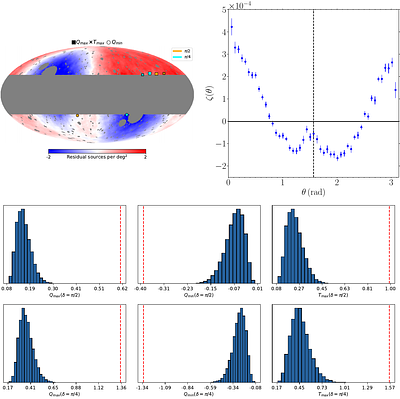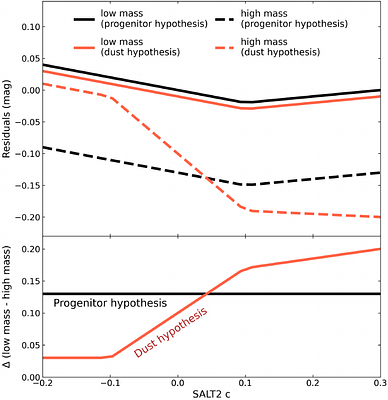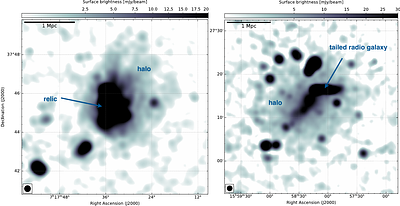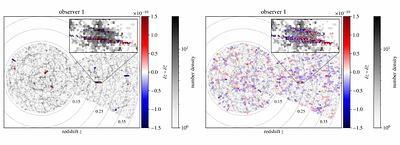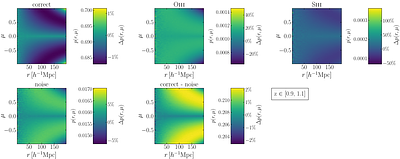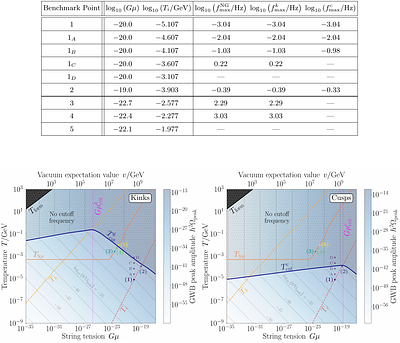By: Renzhi Su, Stephen J. Curran, Francoise Combes, Neeraj Gupta, Sebastien Muller, Di Li, Minfeng Gu
By: Akhil Antony, Stephen Appleby, William L Matthewson, Arman Shafieloo
Cosmology with Galaxy Clusters
By: Hironao Miyatake
By: Yogesh, Abolhassan Mohammadi, Qiang Wu, Tao Zhu
By: Yukei S. Murakami, Daniel Scolnic
By: K. Rajpurohit, A. Botteon, E. O'Sullivan, W. Forman, M. Balboni, L. Bruno, R. J. van Weeren, M. Hoeft, G. Brunetti, C. Jones, A. S. Rajpurohit, S. P. Sikhosana
By: Alexander Oestreicher, Chris Clarkson, Julian Adamek, Sofie Marie Koksbang
By: Euclid Collaboration, I. Risso, A. Veropalumbo, E. Branchini, E. Maragliano, S. de la Torre, E. Sarpa, P. Monaco, B. R. Granett, S. Lee, G. E. Addison, S. Bruton, C. Carbone, G. Lavaux, K. Markovic, K. McCarthy, G. Parimbelli, F. Passalacqua, W. J. Percival, C. Scarlata, E. Sefusatti, Y. Wang, M. Bonici, F. Oppizzi, N. Aghanim, B. Altieri, A. Amara, S. Andreon, N. Auricchio, C. Baccigalupi, M. Baldi, A. Balestra, S. Bardelli, P. Battaglia, A. Biviano, A. Bonchi, D. Bonino, M. Brescia, J. Brinchmann, S. Camera, G. Cañas-Herrera, V. Capobianco, V. F. Cardone, J. Carretero, S. Casas, M. Castellano, G. Castignani, S. Cavuoti, K. C. Chambers, A. Cimatti, C. Colodro-Conde, G. Congedo, C. J. Conselice, L. Conversi, Y. Copin, F. Courbin, H. M. Courtois, M. Crocce, A. Da Silva, H. Degaudenzi, G. De Lucia, A. M. Di Giorgio, H. Dole, M. Douspis, F. Dubath, C. A. J. Duncan, X. Dupac, S. Dusini, S. Escoffier, M. Farina, R. Farinelli, F. Faustini, S. Ferriol, F. Finelli, S. Fotopoulou, N. Fourmanoit, M. Frailis, E. Franceschi, M. Fumana, S. Galeotta, K. George, W. Gillard, B. Gillis, C. Giocoli, J. Gracia-Carpio, A. Grazian, F. Grupp, L. Guzzo, S. V. H. Haugan, W. Holmes, F. Hormuth, A. Hornstrup, P. Hudelot, K. Jahnke, M. Jhabvala, B. Joachimi, E. Keihänen, S. Kermiche, A. Kiessling, M. Kilbinger, B. Kubik, M. Kümmel, M. Kunz, H. Kurki-Suonio, A. M. C. Le Brun, P. Liebing, S. Ligori, P. B. Lilje, V. Lindholm, I. Lloro, G. Mainetti, D. Maino, E. Maiorano, O. Mansutti, S. Marcin, O. Marggraf, M. Martinelli, N. Martinet, F. Marulli, R. Massey, S. Maurogordato, E. Medinaceli, S. Mei, M. Melchior, Y. Mellier, M. Meneghetti, E. Merlin, G. Meylan, A. Mora, M. Moresco, L. Moscardini, R. Nakajima, C. Neissner, S. -M. Niemi, J. W. Nightingale, C. Padilla, S. Paltani, F. Pasian, K. Pedersen, V. Pettorino, S. Pires, G. Polenta, M. Poncet, L. A. Popa, L. Pozzetti, F. Raison, R. Rebolo, A. Renzi, J. Rhodes, G. Riccio, E. Romelli, M. Roncarelli, E. Rossetti, R. Saglia, Z. Sakr, D. Sapone, B. Sartoris, J. A. Schewtschenko, P. Schneider, T. Schrabback, M. Scodeggio, A. Secroun, G. Seidel, M. Seiffert, S. Serrano, P. Simon, C. Sirignano, G. Sirri, L. Stanco, J. Steinwagner, C. Surace, P. Tallada-Crespí, D. Tavagnacco, A. N. Taylor, I. Tereno, N. Tessore, S. Toft, R. Toledo-Moreo, F. Torradeflot, I. Tutusaus, L. Valenziano, J. Valiviita, T. Vassallo, G. Verdoes Kleijn, D. Vibert, J. Weller, G. Zamorani, F. M. Zerbi, E. Zucca, V. Allevato, M. Ballardini, M. Bolzonella, E. Bozzo, C. Burigana, R. Cabanac, A. Cappi, D. Di Ferdinando, J. A. Escartin Vigo, L. Gabarra, W. G. Hartley, J. Martín-Fleitas, S. Matthew, N. Mauri, R. B. Metcalf, A. Pezzotta, M. Pöntinen, C. Porciani, V. Scottez, M. Sereno, M. Tenti, M. Viel, M. Wiesmann, Y. Akrami, S. Alvi, I. T. Andika, M. Archidiacono, F. Atrio-Barandela, S. Avila, A. Balaguera-Antolinez, C. Benoist, D. Bertacca, M. Bethermin, L. Blot, H. Böhringer, S. Borgani, M. L. Brown, A. Calabro, B. Camacho Quevedo, F. Caro, C. S. Carvalho, T. Castro, F. Cogato, A. R. Cooray, O. Cucciati, S. Davini, F. De Paolis, G. Desprez, A. Díaz-Sánchez, J. J. Diaz, S. Di Domizio, J. M. Diego, P. Dimauro, A. Enia, Y. Fang, A. G. Ferrari, A. Finoguenov, A. Fontana, A. Franco, K. Ganga, J. García-Bellido, T. Gasparetto, V. Gautard, E. Gaztanaga, F. Giacomini, F. Gianotti, G. Gozaliasl, M. Guidi, C. M. Gutierrez, A. Hall, S. Hemmati, C. Hernández-Monteagudo, H. Hildebrandt, J. Hjorth, S. Joudaki, J. J. E. Kajava, Y. Kang, V. Kansal, D. Karagiannis, K. Kiiveri, C. C. Kirkpatrick, S. Kruk, V. Le Brun, J. Le Graet, L. Legrand, M. Lembo, F. Lepori, G. Leroy, G. F. Lesci, L. Leuzzi, T. I. Liaudat, A. Loureiro, J. Macias-Perez, M. Magliocchetti, F. Mannucci, R. Maoli, C. J. A. P. Martins, L. Maurin, M. Miluzio, C. Moretti, G. Morgante, S. Nadathur, K. Naidoo, A. Navarro-Alsina, K. Paterson, L. Patrizii, A. Pisani, D. Potter, S. Quai, M. Radovich, P. -F. Rocci, S. Sacquegna, M. Sahlén, D. B. Sanders, A. Schneider, D. Sciotti, E. Sellentin, L. C. Smith, J. G. Sorce, K. Tanidis, C. Tao, G. Testera, R. Teyssier, S. Tosi, A. Troja, M. Tucci, C. Valieri, A. Venhola, D. Vergani, G. Verza, N. A. Walton
Cluster Lensing Mass Inversion (CLUMI+): Combining Dynamics and Weak Lensing around Galaxy Clusters
By: Keiichi Umetsu, Michele Pizzardo, Antonaldo Diaferio, Margaret J. Geller
By: Kai Schmitz, Tobias Schröder

